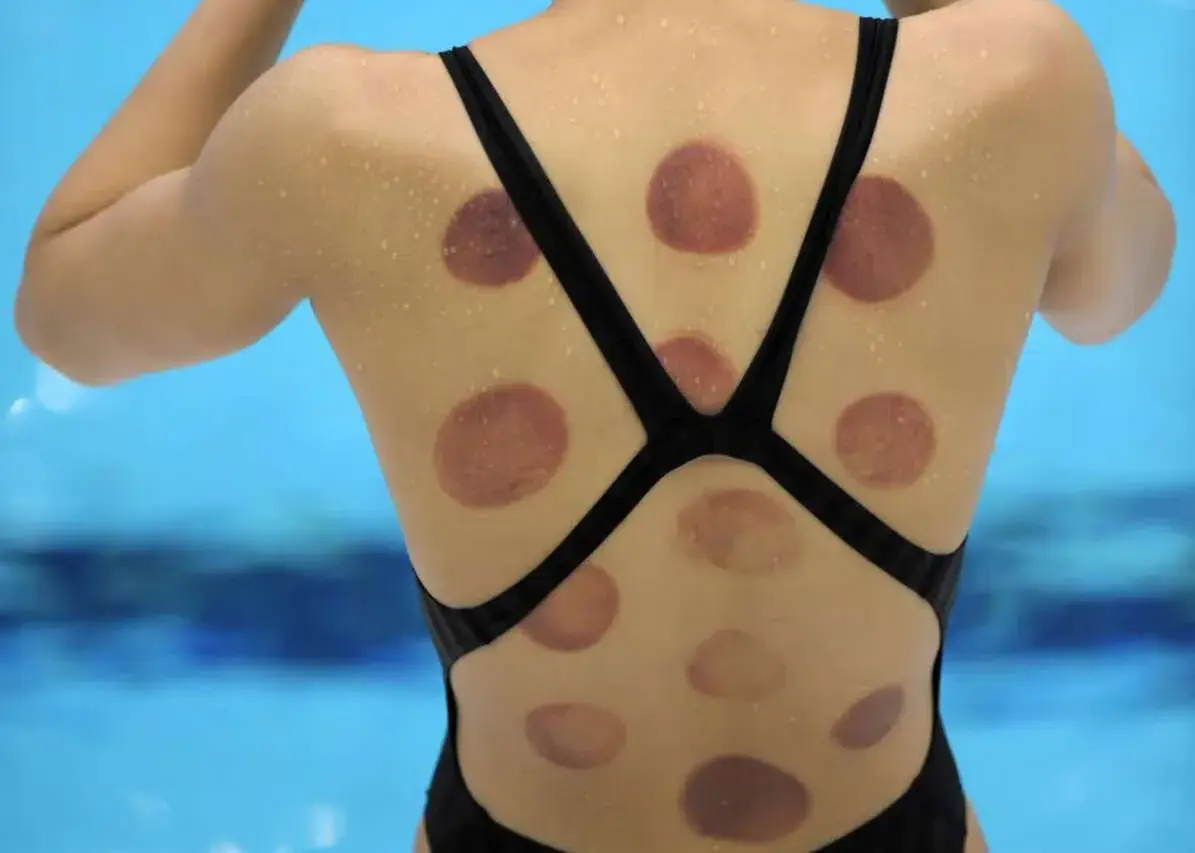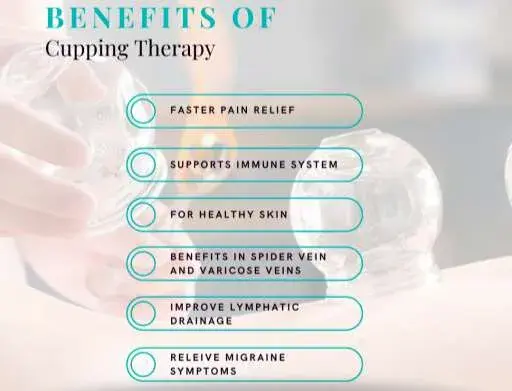Cupping has been traditionally used for centuries to treat back pain, neck discomfort, headaches , and other ailments. Cupping therapy includes using suction to draw veins into the skin. Cupping can cause bleeding and skin infections. While there is little data on the advantages of Cupping, the therapy risks are negligible. The process of Cupping improves blood flow to the part of the body when the cups are placed. This might ease muscular tension, encouraging cell regeneration and enhancing general blood flow. Additionally, it could support the development of new blood vessels and connective tissues in the tissue. People use cupping as an additional kind of treatment for various symptoms and conditions. In this article, we will examine what is cup therapy, its benefits, side effects, and how it works, so continue reading to know more about Cupping.
What is cupping?

Cupping is a traditional healing technique that others use to relieve pain. A provider places Cups on the back side, stomach, arms, legs, or other regions of your body. A vacuum or pressure force pulls the skin upward inside the cup. Cupping is a traditional treatment followed by Chinese and Middle Eastern treatment. Cupping therapy has been used for hundreds of thousands of years.
What is the procedure for Cupping?
Researchers are constantly investigating how cupping alleviates pain and illness symptoms. There has yet to be plenty of research done on the therapy. Cupping suction pulls fluid into the treatment area. Under the epidermis, the suction force strains and ruptures capillaries, which are tiny blood vessels. Your body reacts to the cupped region as if it were an injury. It provides additional blood to the affected area to aid in healing itself. According to research, Cupping removes the skin's pores and releases pollutants.
Who can perform Cupping?
Cupping training is available for a wide range of professionals, including:
- Acupuncturists.
- Chiropractors.
- Therapists who provide massages.
- Doctors of medicine.
- Therapists who specialize in physical therapy.
What does Cupping is used to treat?
Cupping is commonly used to treat painful disorders. Some claim it can also help deal with long-term (ongoing) health problems. Cupping may help with the symptoms of:
- Rheumatism is one type of arthritis.
- Back discomfort, neck pain, knee pain, and shoulder pain are all common symptoms.
- Allergies and other problems with breathing.
- Carpal tunnel syndrome (CTS).
- Irritable bowel disorder (IBD) is one example of a gastrointestinal condition.
- Migraines and headaches are common.
- High blood pressure.
How does Cupping work?
Cupping can be done in a variety of ways. Your provider will leave the cups in place for a few minutes. Some treatments involve shifting the cups briefly to move and massage the affected area. Cupping techniques include the following:
- Dry Cupping: Your supplier warms the inside of each cup, usually with an alcohol-soaked towel that has been lit alight. The heat causes oxygen to escape from the cup, resulting in a vacuum. Certain suppliers use suction devices to eliminate air from cups. The vacuum force draws the outer layer into the cup once it is on the skin's surface.
- Wet Cupping: Before, occasionally after, Cupping, your therapist will delicately puncture your skin with a needle. Toxins exit body parts through the cupping procedure's punctured areas.
- Traditional Cupping: placing a small cup over a painful region or acupressure spot along an energy line. Depending on the severity of the individual's ailment, the cups are set for 5-20 minutes. A typical course of treatment consists of 4-6 sessions spaced 3-10 days apart.
- Slide cupping: sliding cups is typically used to treat pain and cramps in the vast back muscle tissues. Massage oil is poured to the skin before the cups are put, allowing the cups to slide freely over the skin's surface.
- Air cupping: Another option to fire Cupping, air cupping uses a small suction pump to expel air through the cups, generating a vacuum without heat.
What are the benefits of Cupping?

There are few high-quality studies on Cupping's usefulness. And experts need to figure out why or exactly how Cupping might benefit patients. Cupping may have a placebo effect, which means it works because people feel it does. Cupping can help with local pain alleviation and muscle relaxation. Cupping enhances overall health by clearing energy blockages identified by TCM practitioners as impediments to the passage of healthy energy. Cupping may help athletes enhance the flow of blood to a specific muscle location or relieve pain. Cupping has traditionally been used to treat respiratory issues such as:
It's also been used for:
- Paralysis, digestive problems, and pain.
Cupping has mostly been investigated in China, where it is beneficial for ailments such as depression, anxiety, pain in the back, veins that are varicose, hypertension, acne, eczema, growth, arthritis, fibromyalgia, diabetes, anemia, rashes (herpes zoster), insomnia, and gout. While some of these research studies are of poor quality, the results of actual improvement are considerable, particularly given the low potential of side effects.
What are the dangers and complications of Cupping?
Cupping is a relatively secure form of therapy. You may still encounter:
- The heat from heated cups causes burns.
- Fatigue.
- Headaches.
- soreness or muscle strain.
- Nausea.
- Infections, itching, and scarring of the skin
Who should not have Cupping?
Because researchers know so little about Cupping's effects on pregnancy, expecting mothers should avoid it. Cupping should also be avoided if you have:
- Haemophilia and other bleeding disorders.
- Problems with blood clotting include thrombosis of deep veins or a history of strokes.
- Eczema and psoriasis are two examples of skin ailments.
- Epilepsy (seizures).
What are the Cupping side effects?
Tiny blood vessels in the skin that are injured or ruptured due to stress to the skin, such as punching yourself with an object or bumping into something, cause bruises. Blood seeps from these blood vessels that are damaged into cells and the body's reaction to the injury causes a bump or bruise to have a raised area. The term "contusion" is used in medicine to describe a bruise. Ecchymosis is the medical term for the flat, purple bruise that develops as blood seeps into the top uppermost skin. The terminology used to describe various types of bruising frequently includes references to both the cause and the look of the bruise.
Conclusion -
Certain conditions and pain may be reduced with cupping therapy. The efficiency of the therapy, its mechanism of action, and the illnesses it addresses are all still being determined. "What is cup therapy?" is a common question asked by individuals curious about an ancient healing treatment that consisted of sucking on the skin using glass, plastic, or silicone cups. It can facilitate improved blood flow, pain relief, and immunological function. Cupping may be a useful supplemental treatment for a variety of problems and illnesses, according to research. However, more credible research is required to substantiate the benefits of Cupping. Even though Cupping is generally safe, you should see your doctor before beginning the procedure. If you're searching for the best orthopedic doctors near me in India to help with back pain or any orthopedic concerns, Credihealth makes it easy to find top doctors near you.
Book an online appointment with the Best Orthopedic Doctor in Ranchi

Reviewed by







